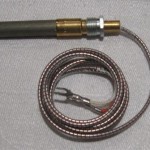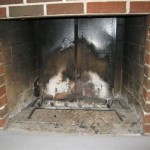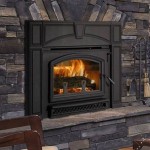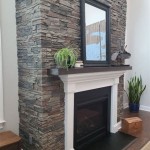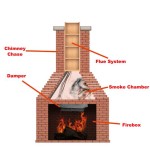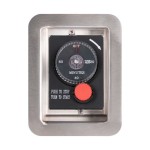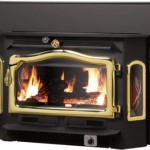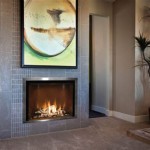Can You Cover Over a Fireplace? Considerations and Methods
The decision to cover over a fireplace is often driven by aesthetic preferences, functional needs, or safety concerns. Many homeowners find their existing fireplace no longer suits their interior design or that they simply don't utilize it. Covering a fireplace can free up valuable floor space, eliminate drafts, and provide a blank canvas for decorative improvements. However, the process requires careful planning and execution to ensure safety and compliance with building codes.
Before embarking on such a project, a thorough assessment of the existing fireplace is crucial. This includes inspecting the structure for any signs of damage, such as cracks in the firebox, crumbling mortar, or water damage. Identifying and addressing these issues before covering the fireplace is essential to prevent future problems. Furthermore, understanding the type of fireplace – whether it's a traditional wood-burning fireplace, a gas fireplace, or an electric fireplace – will influence the appropriate covering method.
The long-term implications of covering a fireplace should also be considered. While the fireplace may currently be unused, future homeowners may desire to reactivate it. Covering the fireplace in a way that allows for relatively easy removal of the covering materials is generally recommended. This involves avoiding permanent alterations to the existing structure and using reversible attachment methods.
Safety Considerations Before Covering a Fireplace
Prior to any physical alterations, safety must be prioritized. If the fireplace is a gas fireplace, a qualified HVAC technician should disconnect and cap the gas line according to local regulations. This is a critical step to prevent gas leaks. For wood-burning fireplaces, ensuring the chimney is properly cleaned is equally important. Creosote buildup in the chimney poses a significant fire hazard, even if the fireplace is not actively used. A professional chimney sweep can remove any accumulated creosote and inspect the chimney for structural integrity.
Additionally, consider the potential for carbon monoxide buildup. Even a sealed fireplace can potentially leak carbon monoxide if the chimney is blocked or damaged. Installing a carbon monoxide detector in the vicinity of the covered fireplace is a prudent safety measure. Regular testing of the detector is crucial to ensure its functionality.
Material selection also plays a vital role in safety. Avoid using flammable materials directly against the fireplace structure. Fire-resistant materials, such as cement board or non-combustible insulation, are preferred for creating a safe and durable barrier.
Methods for Covering a Fireplace
Several methods can be employed to cover a fireplace, each with its own advantages and disadvantages. One common approach involves building a frame around the fireplace opening using wood or metal studs. This frame can then be covered with drywall or other decorative materials. The cavity behind the drywall can be insulated to improve energy efficiency and prevent drafts.
Another method involves creating a custom-built cabinet or shelving unit that fits over the fireplace opening. This approach provides both aesthetic appeal and functional storage space. The cabinet can be designed to complement the existing décor and conceal the fireplace completely. However, this method may require more extensive construction and careful measurement to ensure a proper fit.
A simpler and more reversible solution involves using a decorative screen or panel to cover the fireplace opening. This approach is less permanent and allows for easy removal of the covering if desired. Decorative screens are available in a variety of styles and materials, offering a wide range of aesthetic options.
Regardless of the chosen method, proper ventilation is essential. Completely sealing off the fireplace can lead to moisture buildup and potential mold growth. Providing some form of ventilation, such as small vents or gaps in the covering, can help prevent these problems.
Materials and Techniques for a Seamless Finish
Achieving a seamless finish is crucial for creating a visually appealing result. When using drywall, proper taping and mudding techniques are essential to eliminate visible seams. Applying multiple thin coats of joint compound and sanding smooth between coats will create a professional-looking surface. Priming the drywall before painting will improve adhesion and ensure a uniform color.
When building a cabinet or shelving unit, selecting materials that complement the existing décor is important. Matching the wood species and finish to the surrounding trim and furniture will create a cohesive look. Using high-quality hardware and hinges will ensure the durability and functionality of the cabinet.
For decorative screens or panels, consider the overall style of the room. Choose materials and patterns that enhance the existing décor and create a focal point. Metal screens can add a modern touch, while fabric panels can soften the appearance. Consider the lighting in the room and how it will interact with the chosen materials.
Ultimately, covering a fireplace is a significant undertaking that requires careful planning and execution. By considering the safety aspects, choosing appropriate materials and methods, and paying attention to detail, homeowners can successfully transform their unused fireplace into a functional and aesthetically pleasing element of their home.

Cover Up Part Deux

How To Cover A Brick Fireplace With Wood Stone Nina Hendrick Home

Diy Brick Fireplace Makeover Extreme Home Part 6 Stucco

Easy Ways To Cover A Fireplace 12 Steps With S Wikihow

How To Build A Fireplace Surround Beneath My Heart

Our Ugly Brick Fireplace He Vetoes Painting It Laurel Home

How To Cover A Brick Fireplace With Wood Stone Nina Hendrick Home

Build A Diy Faux Beam Fireplace Mantel Cover Jennifer Rizzo

Cover Up

Diy Fireplace Makeover Wood Slat
Related Posts

